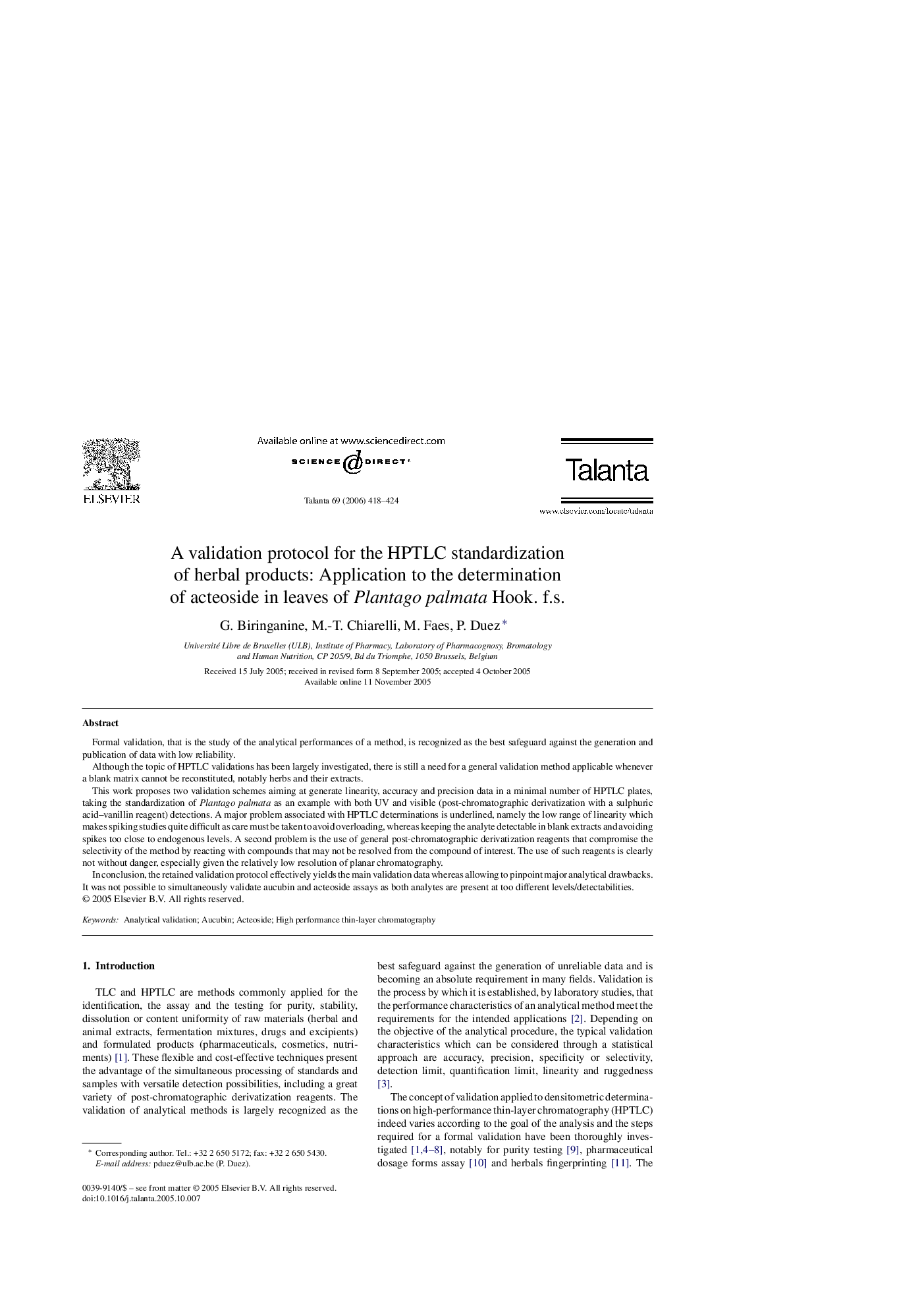| Article ID | Journal | Published Year | Pages | File Type |
|---|---|---|---|---|
| 1247335 | Talanta | 2006 | 7 Pages |
Formal validation, that is the study of the analytical performances of a method, is recognized as the best safeguard against the generation and publication of data with low reliability.Although the topic of HPTLC validations has been largely investigated, there is still a need for a general validation method applicable whenever a blank matrix cannot be reconstituted, notably herbs and their extracts.This work proposes two validation schemes aiming at generate linearity, accuracy and precision data in a minimal number of HPTLC plates, taking the standardization of Plantago palmata as an example with both UV and visible (post-chromatographic derivatization with a sulphuric acid–vanillin reagent) detections. A major problem associated with HPTLC determinations is underlined, namely the low range of linearity which makes spiking studies quite difficult as care must be taken to avoid overloading, whereas keeping the analyte detectable in blank extracts and avoiding spikes too close to endogenous levels. A second problem is the use of general post-chromatographic derivatization reagents that compromise the selectivity of the method by reacting with compounds that may not be resolved from the compound of interest. The use of such reagents is clearly not without danger, especially given the relatively low resolution of planar chromatography.In conclusion, the retained validation protocol effectively yields the main validation data whereas allowing to pinpoint major analytical drawbacks. It was not possible to simultaneously validate aucubin and acteoside assays as both analytes are present at too different levels/detectabilities.
